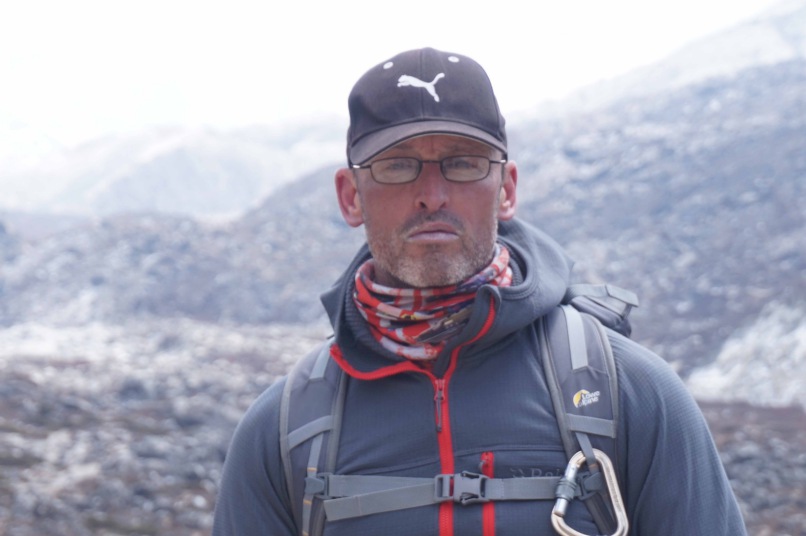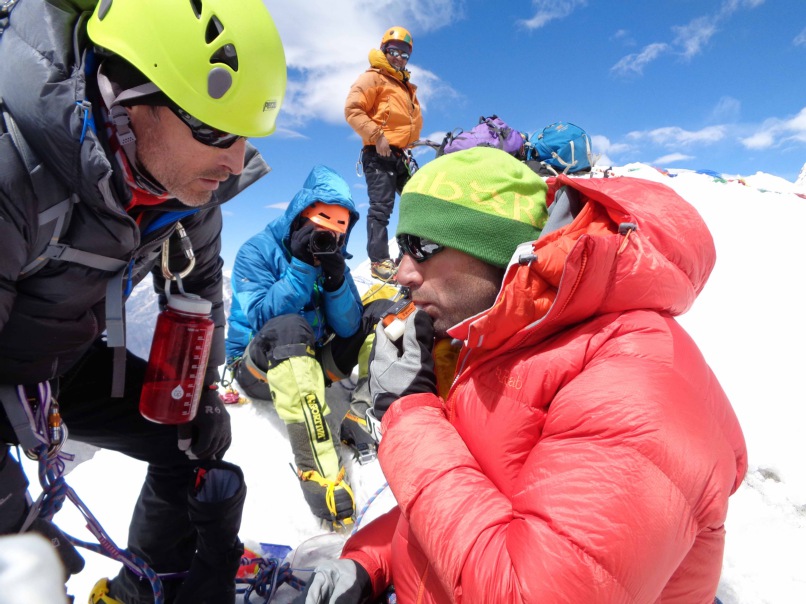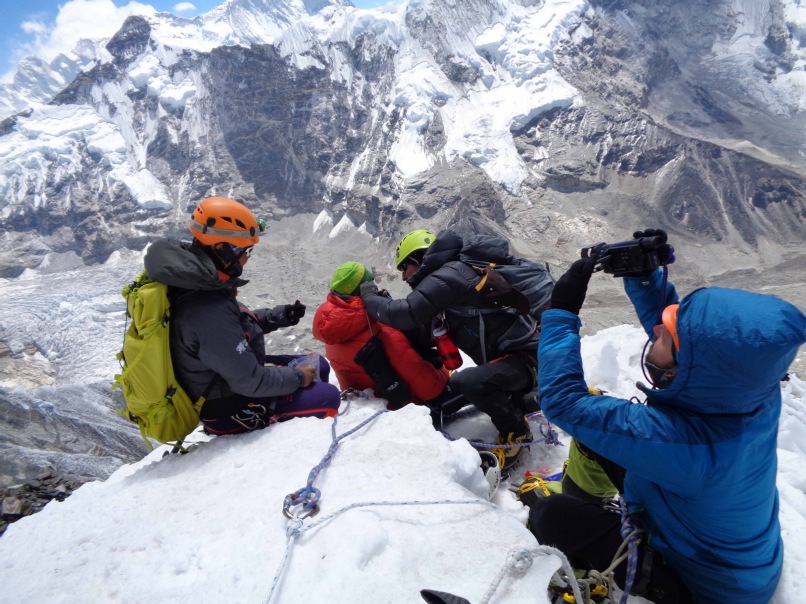Project Everest Cynllun team blog: Professor Damian Bailey - Island Peak Summit Science

Time to write the next science blog in the comparative luxury of Dingboche; here the air feels so much thicker and I’m not fighting for that extra breath that continues to escape me at the higher elevations! OK, here’s the update. Phase I of the Summit Science is now complete having successfully summited Island Peak (6,189m/20,305ft) our litmus test for the collection of scientific data on the summit of Mt. Everest (8,848m) more than two and a half kilometers higher again (sobering!). This was an interesting ascent with myself, Richard and Gareth the cameraman encountering numerous mostly physical challenges to get to the top (notably the distinct lack of mountaineering etiquette displayed by mostly European climbers foaming at the mouth with “summit fever”!). Helps remind me of the age-old dictum, “safety before summit”. That-aside, we were elated to have reached the summit safe and sound having transported the portable instruments in Richard’s rucksack, strategically housed within very sophisticated Tesco zip-lock bags!
With the assistance of Sherpa Pema, we started our dry-run, stopwatch in hand with Gareth filming. First the capnography that confirmed Richard’s very low end-tidal levels of carbon dioxide (that the brain battles constantly against in order to get more blood, oxygen and glucose to its hard-working neurons).

Then came the sampling of arterialised blood from Richard’s frozen earlobe, wearing its battle scars from halcyon days of professional rugby.

Under pressure to get this done, I spent 2 minutes frantically looking for the scalpel that I had strategically placed in my down mitt, realising how hypoxic we all were! Gareth thought this was hilarious of course and no extra pressure knowing that I was being filmed; would make for a great Monty Python sketch! The capillary tube filled nicely and having sealed it from the ambient, it was quickly transferred to a plastic tube and then packed safely inside Richard’s hot chocolate vacuum flask and jammed full of ice. As this was being completed, Richard started the “pretend” biopsy procedure, going over each step meticulously, shaving precious minutes off wherever he could, like the streamlined Ferrari that he is! Finally, out came the Sony tablet with the cognitive function software and off Richard went, challenged by bleeping lights and tap-tapping the screen furiously trying to (unsuccessfully of course!), match his sea-level scores. The rarefied air on the summit of Island Peak had a noticeably negative impact on Richard’s performance and reminded me yet again that it’s all about oxygen and what gas guzzling energy hogs our brains have evolved into; way over-engineered!
Surprisingly no glitches though the stopwatch bleeped at a sobering 27 minutes 13 seconds; too slow and we’d be keen to reduce this by about half (gulp!) More practice needed and Richard needs to shift from Ferrari to Lamborghini status on the summit of Mt. Everest. Feeling very happy at the success of data collection in such an inhospitable environment…but this is short lived as I glance over to the summit ridge that we need to tackle in order to get down to the glacier below and traverse those decidedly dodgy aluminium ladders in steely crampons straddling monster crevasses!















